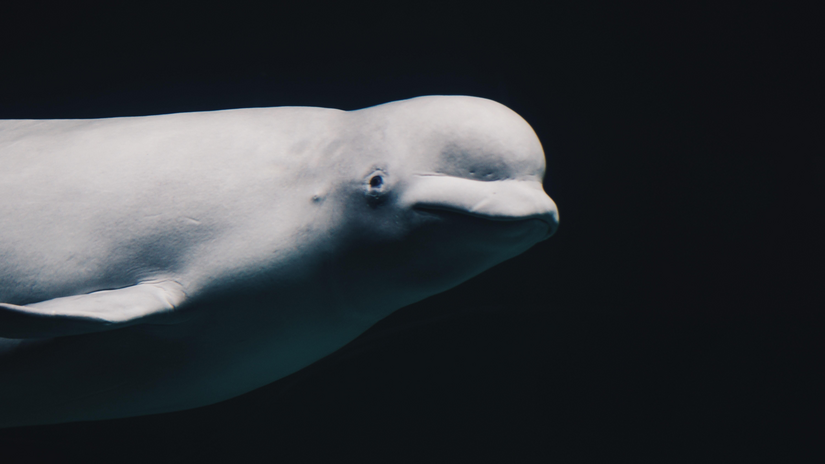‘Celebrated’ in the Faroe Islands, a remote territory of the North Atlantic, Grindadráp is a part of the inhabitants’ cultural heritage wherein hunting of long-finned pilot whales as well as other species of cetaceans such as bottle nose dolphins, white-sided dolphins and Risso’s dolphins takes place. While ‘grind’ signifies a pod of pilot whales (grindahvalur in Faroese), ‘drap’ is more indicative of dispatching an animal with the motive of processing its remains into edible food also known as butchery. The onset of this practice is rather slow with seeking the pod of dolphins in the ocean followed by the call for reinforcements on land. The boats surround the pod, making a wide semi-circle, start to drive the whales along with themselves towards the hunting bays. Since all bays are not certified, the slaughter takes place on a single certified beach named Skálabotnur in Eysturoy. Eventually, when the whales become stranded, the ones that aren’t immediately beached get pulled onto the shore using ropes in a matter of seconds. Devices like the spinal lance are used to sever the spinal cord that cuts the blood flow to the brain granting the cetacean a painless death.
The psychological suffering of the marine mammal in this macabre act is hardly ever mentioned in the general debate on this subject. The precise descriptions of the ‘controlled’ environment under which this practice takes place create an illusion of regulation over reality. As soon as the first drop of blood hits the water, it has been witnessed that the whales tend to stick together. These animals are highly aware of what’s happening around them and therefore highly bonded, en masse. Keeping in mind their sensitivity and intelligence, imagine having them witness each other die and drown in each others’ blood. The quantification of this tradition may be exhibited with rationality which, to a certain extent , is somewhat true. The emotional aspect of Grindadráp calls for engaging both the parties, whales and humans, and therefore the theory of regulating the practice contradicts the emotional aspect of it. When the dispatching happens at such a wanton scale, a whole genetic pool is wiped out at once thus resulting in a massive ecological imbalance. Hence, the more appropriate way of perceiving this local traditional hunt would be ‘the culling of a pod of pilot whales.’
One may wonder if there is any place left for whale hunting in the 21st century, and apparently, there is. On September 12, 2021, around one thousand four hundred whales were slaughtered which was reported to be the highest death toll ever recorded and between the period 2010 and 2019. More than 8000 cetaceans were killed with long-finned pilot whales being the main targets. The main issue that persists is the sustainability of the tradition. Will the depletion of marine life severely dwindle the entire ecosystem, endangering the human subsistence that depends on it?
Although the supporters argue for it being an environment- friendly way of procuring food, this practice is still subjected to debate. The belief of supporters lies in the fact that for every pilot whale harvested, the need to import meat is lesser. Secondly, as the long-finned pilot whale is not a threatened species, the number of whales harvested is much less than the actual surplus by birth. Furthermore, the meat of these whales is a form of food production and a local resource-rich in protein. Due to these aforementioned reasons, some Faroese citizens accuse NGOs and foreign media of not respecting their culture where fishing and local traditions are key to their livelihoods.
The extent of the event continues to instill shock, fear, and confusion among those who are sensitive towards the issue including environmentalists and many islands too who think the practice is unnecessary and a cruel relic of the past. The meat coming from the hunt is more than enough for the satisfaction of the island families who usually feed on it. Moreover, the meat is only extracted from the carcass and fat and the rest of the body parts like the head and fins are directly thrown into the sea to be naturally biodegraded. This is a clear example of cruelty and waste.
In contrast to the arguments presented by the supporters of it being a rich resource for local consumption, the public health authorities reveal that due to the presence of water pollutants, cetaceans contain high levels of mercury that are unfit for human consumption. Grindadráp has evoked outrage among many organizations like Sea Shepherd and Greenpeace since the 1980s. Sea Shepherd made several attempts towards the discontinuation of whale hunting but had to rather face a legal ban restraining them from protesting against this practice. They now broadcast the happenings of the event on social media and create human awareness on the matter.
The 21st-century demands setting boundaries and differentiating between the acceptable traditions and practices that involve physical and psychological damage towards any living being.


